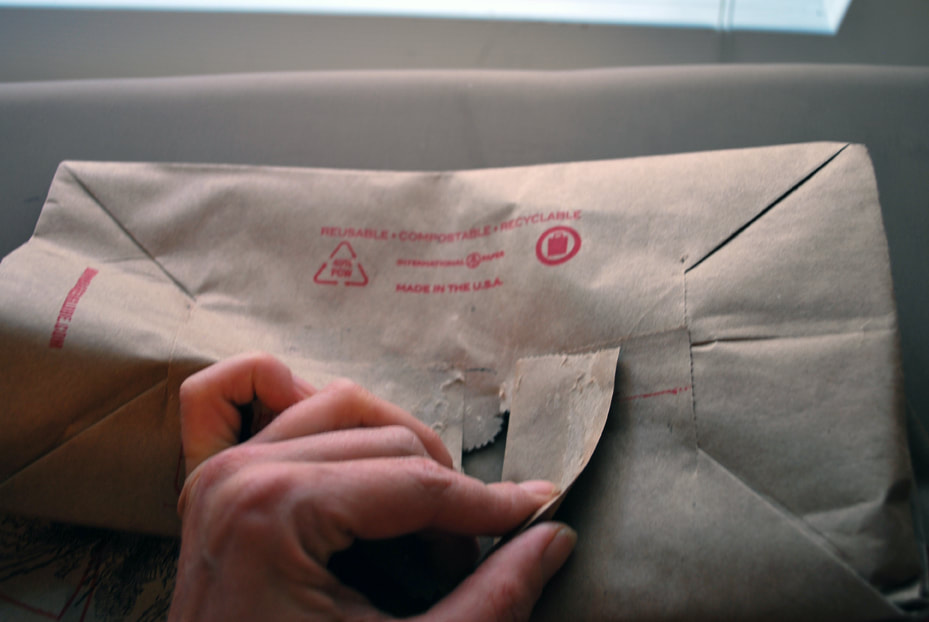|
Why use paper bags as pattern paper?
A. It's sustainable re-use. B. It's cheaper than pattern paper and much sturdier. C. It's really convenient. D. My inspiration can't wait for me to drive to the store to get patterning paper. E. All of the above. All of these answers are good. I personally like "E". I've been using paper bags as pattern paper for years. Sometimes that's because they're around and no one has time to run out for a roll of paper. (Deadlines on TV shoots and rock star samples can get pretty hairy.) The tissue paper used for commercial patterns is flimsy and awful and gridded pattern paper isn't much stronger. And who wants to pay for it? Rosin paper rolls from the hardware store are great if you're making very wide patterns for things like Renaissance skirts and inflatable wading pool belts. Sometimes I need that extra width. But for most plain old clothing patterns, grocery bags rock. I'm fond of Trader Joe's paper bags for hat, shirt and accessory patterns. The bags are sturdy and already made of recycled materials. Whole Foods bags are thinner and taller, so they're pretty good for pant and skirt patterns. Other chain grocery store bags seem to be both short and thin, but they'll do in a pinch. Any paper bag will do! If you don't have enough room on one bag, Scotch or masking tape is your friend. Make it a Franken-pattern by taping the flattened bags together. Just remember: tape does not take well to a lot of heat. Both clear plastic tapes and masking tape can melt and sticks to the iron. Iron out your paper bags before taping them. Regular re-users, please stop here. You already know how to cleanly tear apart a paper bag. For everyone else, here's the step by step process in pictures. Next time we'll make a pattern from a partially dissected top.
0 Comments
More practical knowledge for your enjoyment!
A big part of dissecting knitwear is taking out the coverstitched hems. Most knit clothing has coverstitched hems. You may not know the machine, but you definitely know the stitch. Ideally, there's a single thread that you can pull to unchain everything at one fell swoop. In the real world it just doesn't work out that way. After 25 years of unpicking hems, I still can't consistently make that happen. Sometimes the machine tension is tight in spots, sometimes the thread is weak, sometimes the fabric has an uneven knit and the thread sticks or maybe I'm just too impatient and tug too hard. All of these things may be true. Whatever. This method works, and I can usually get at big chunk of the hem to unravel in a satisfying wad of thread! Here are the steps in picture form: |
A. Laura Brody
I re*make mobility devices and materials and give them new lives. Sometimes I staple drape. Archives
June 2024
|



















 RSS Feed
RSS Feed